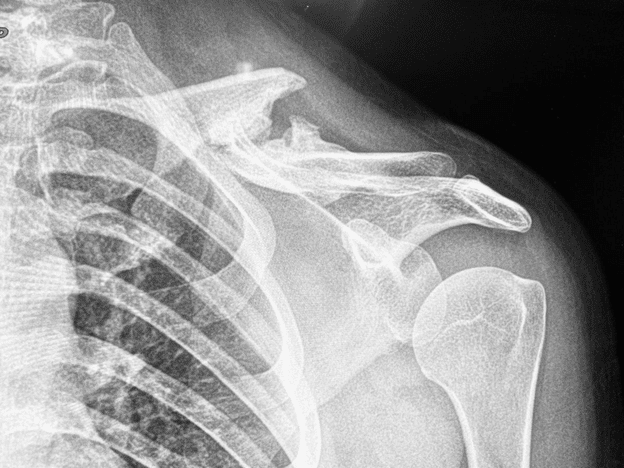Fractures, a usual consequence of accidents and damage, are generally treatable through proper cures. But in rare instances, they can result in difficulties known as malunion and nonunion fractures – with malunion occurring when fractured bones heal unusually in an abnormal position leading to useful impairment and deformity, while nonunion refers to any failure for cracked bones to heal after long timeframes have lapsed – both requiring special care to safeguard full functionality is regained; both need expert treatments as well as thorough recovery procedures so this article explores their causes, options treatments as well as recovery processes in detail.
Causes of Malunion and Nonunion Fractures
Understanding what causes malunion and nonunion breakages is dominant in treating them effectively since abundant factors play a part in their formation:
-
Infection
Infections pose a massive difficulty when treating malunion and nonunion breaks. They may lead to bone necrosis, worsened healing, hardware failure, and, in most cases, sepsis or regular sepsis and eliminations. Soft tissues play a pivotal role in shielding against infection, making plastic specialists essential companions when conducting involved soft tissue repairs especially fringe fractures. First, the virus must be eradicated with antibiotics and debridement of assumed bone and soft tissues surveyed by wound termination or elimination if required. Antibiotic-laced bone reinforcement could also be exploited during succeeding fracture rebuilding to ensure no reinfection recurs.
-
Insufficient Blood Flow
An acceptable blood supply is critical in repairing fractures. When insufficient blood supply is presumed, imagery scans such as CT or SPECT scans should be applied to confirm necrotic bone. As soon as necrotic bone has been established by imaging scans, elimination will need to take place in order to access healthful bones that connect each end and bond any gaps using either vascularized or non-vascularized bone grafts or advanced lengthening measures could be positioned when elimination results in discrepancies that affect length inconsistencies arising as result of necrotic bone exclusion requiring removal as soon as viable bones join organized again, either method can connection this gap using either non vascularized or vascularized bone implants as soon as feasible after elimination as this gap may require progressive lengthening procedures may need to bridge any inconsistencies caused when affected bone is detached which could result in length inconsistencies by using advanced broadening procedures when necrotic bone removal techniques can also employed; otherwise advanced lengthening measures might need to be working where necessary; otherwise advanced enlargement procedures could also be utilized must these resulted.
-
Biomechanics
Biomechanical considerations may play a key role in malunion or nonunion fractures. Breaks require adequate constancy for proper healing, and uncertainty at the fracture site signals biomechanical disaster. When this is categorized as a concern, hardware should be scrapped, with any troubles at the fracture site attended and enough time allowed for bones to recapture strength to consolidate over time.
-
Patient Biology
Individual biology can have a substantial effect on the healing process. Lab assessments such as metabolic panels or other tests that evaluate your body’s capacity for bone repair factors like hormone levels, nutritional deficits, and examination history will all be taken into significance before reconstructive efforts begin. Any imbalances or deficiencies must be improved before rehabilitative efforts take place.
Treatment Options for Malunion and Nonunion Fractures
Fracture care requires a structured, customized plan. Visit this website to see more treatment options.
-
Infection Management
Effective illness control is central to regarding malunion and nonunion fractures effectively. Eliminating infection typically commands antibiotics, debridement of affected bone and soft networks, wound closure techniques, and, when applicable, removal of prior hardware. For added guarantee during subsequent rebuilding efforts, antibiotic-laced bone bonds could also be employed.
-
Restoration of Blood Flow
In cases where inadequate blood supply exists, rebuilding it for optimal healing may require obtaining necrotic bone and using either vascularized or non-vascularized bone implants to bridge any gaps left by its elimination. Likewise, advanced limb-lengthening actions may be utilized to address inconsistencies caused by such procedures.
-
Biomechanical Strength
Achieve biomechanical stability for ideal healing after malunion or nonunion cracks to promote proper recovery. Analysis of musculoskeletal construction, alignment, and cause of hardware disappointment allows us to devise an appropriate fixation plan using traditional rigid constructs or lively implants such as screws or plates as suitable to promote determined stabilization and endorse proper healing.
-
Customized Approach
Each patient’s biology and individualistic circumstances are taken into explanation when devising their treatment plan. Research laboratory evaluations such as metabolic plates or other tests help assess how successfully the body can repair bone. Tackling hormonal unevenness, nutritional deficits, or healing issues is necessary before reconstructive work can take place.
Recovery Process of Malunion and Nonunion Fractures
The recovery method for malunion and nonunion fractures requires persistence, devotion, and strict adherence to your therapy plan. Recovery times vary based on both the harshness of the fracture and the individual reply to therapy – physical therapy often plays an integral part in serving to restore proper function and mobility directing on strengthening the flexibility range of gestures.
Conclusion
Malunion and nonunion fractures question complex medical challenges that force specialized healing and attention from healthcare specialists. A professional treatment center takes an integrated methodology to manage breakages of the upper hand by studying factors like infection, inadequate blood supply, biomechanical firmness, patient biology, and patient inclination. With a customized medicine plan in place, patients can return to optimal function and their superiority in life. If you or somebody close to you is suffering from malunion or nonunion fractures, seeking medicinal help and traveling all options obtainable from centers are of vital importance to reappearance to a rewarding, active lifestyle. Recognizing and treating their root cause(s) will allow for the best probability of recovery and full reinstatement.

